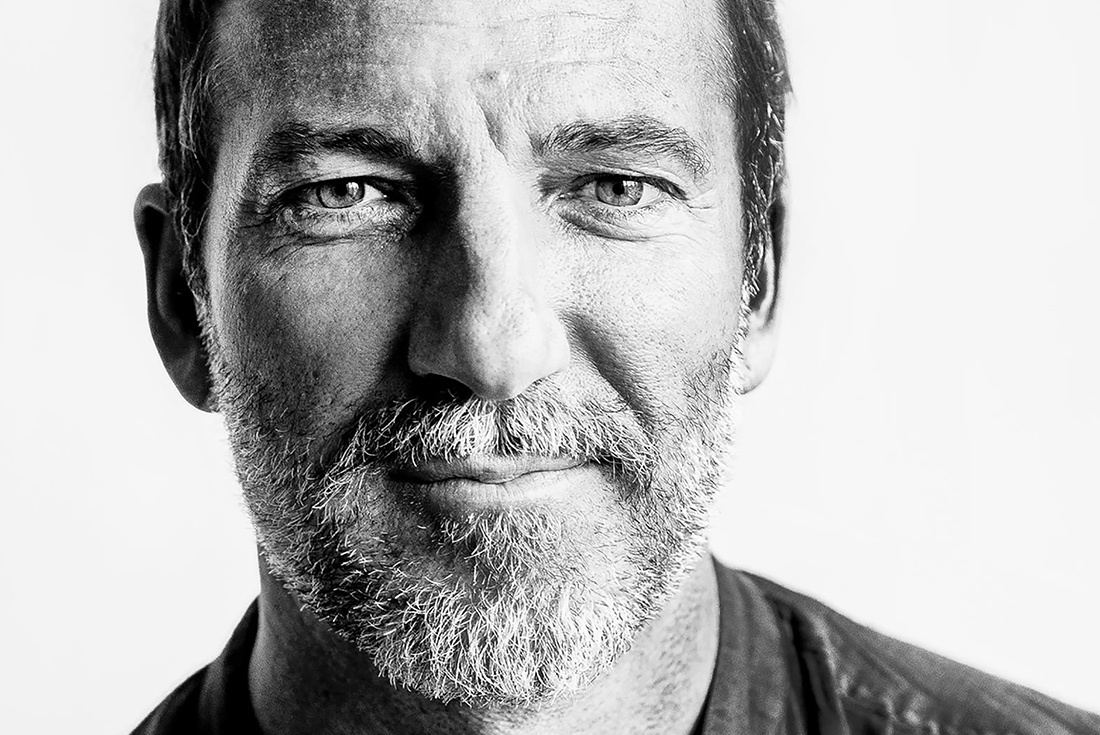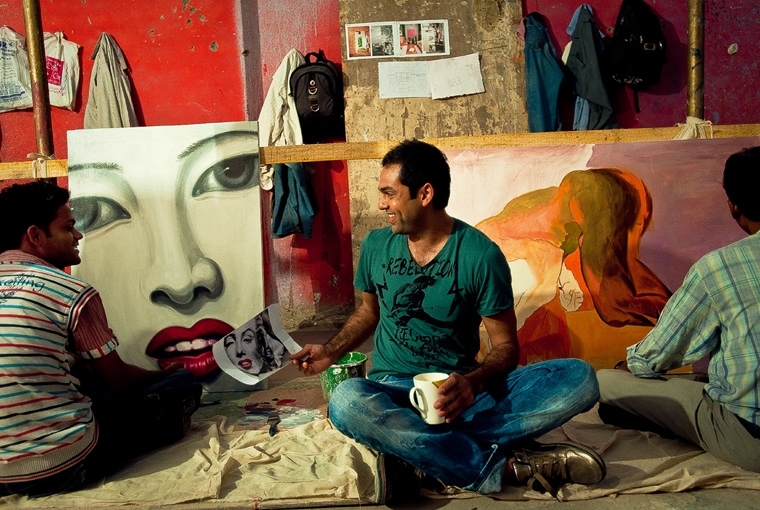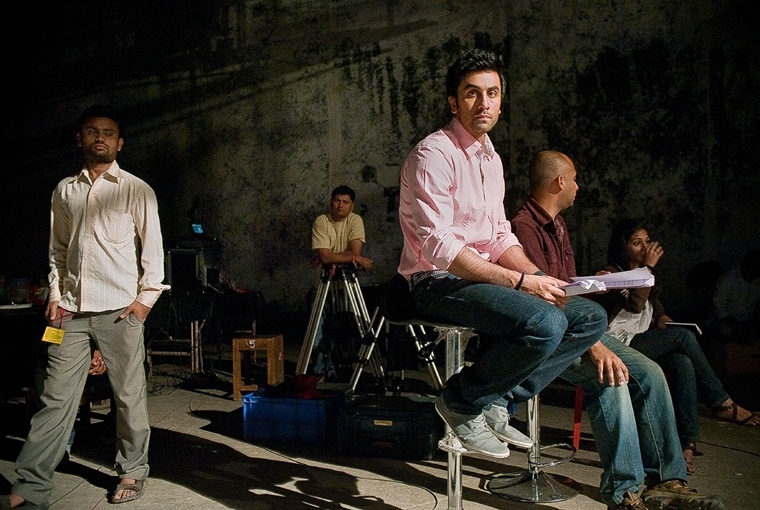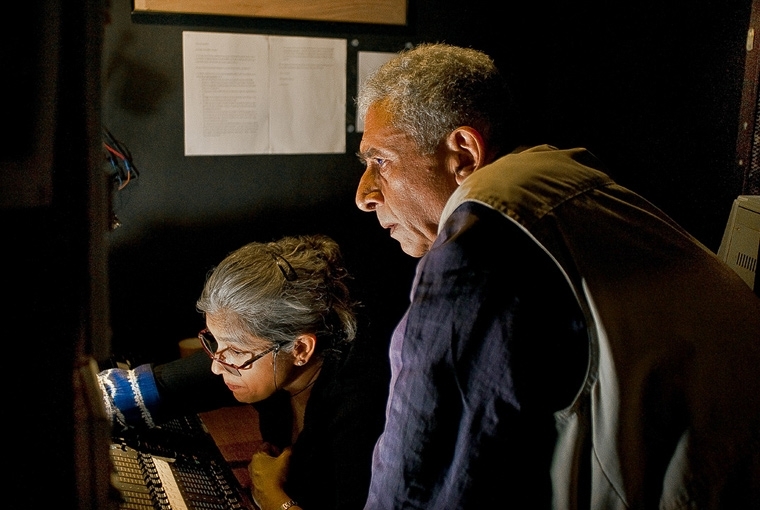

Mark Bennington found photography through a career in acting. When he picked up a camera, everything seemed to fall in place and he knew he’d stumbled upon his passion. From clicking headshots of his friends in Hollywood to today, he’s come a long way. For his debut photo book, he found inspiration in India and in the lives of the Bollywood actors he met. ‘National Geographic veteran photographer, David Alan Harvey and I were talking about book ideas in and around 2008/9 and he was saying that since I had been an actor in Hollywood and knew so many people there that I should do an 'honest-to-god' documentary book on the lives of Hollywood actors. I thought it was a good idea, but got side-tracked with another project, and then about a year later found myself on a plane to India.’ He went on to capture candid, unassuming portraits of the actors he met along the way in Mumbai, creating the foundation of his book. Mark admits that each image he creates begins with some form of connection. ‘I really feel with all my work, it is about connection. Emotional connection to other human beings, connection to some fundamental truths that we we all share. And also connecting to a shared narrative as a collaborative process. I love this quote from the legendary photographer Alfred Eisenstaedt, who said 'It is more important to click with people than to click the shutter.’
As we connect with him, Mark takes us through his debut picture book and tells us where he’s headed.

When did your romance with the camera begin?
I picked up the camera in 2003, after working as an actor for 10 years in New York & Los Angeles. I was looking for something new and creative, after feeling a little bored with my acting career. So I started photographing all of my friends in Hollywood - doing their headshots, portfolios, etc. And almost over night, I was making a living as a photographer and loving the newness and creativity of it. Within those first 6 months, I realized that if I was charging people for my services, I should probably know what I was really doing. So, I went back to school for photography and later photojournalism. When I discovered documentary work, that’s when things started to shift. I saw the work of Alexandra Boulat, David Alan Harvey, Alex Webb, Mary Alan Mark, Eugene Richards, Lauren Greenfield, etc… that’s actually when I went back to school again for photojournalism. For a long time I tried to separate the two, but a few years ago as I found myself teaching photography at the S.I. Newhouse School at Syracuse University and realized that I could successfully do both commercial work and project based work AND that they would/could inform each other.
A lot of your series is based around India – what is it about the country that fascinates and pulls you in?
It all started with reading Robert Johnson’s book Balancing Heaven and Earth… that made me feel like I had to come to India... to see, feel and experience it- not as a tourist, but as a human being. I love the way this culture feels life and FLOWS- it is refreshing. I also love the way everyone is referred to as brother, sister, aunty, uncle… it feels like everyone is together. I love the traffic and the smells and the food!! I feel at home here. And then, of course, as an artist it is very complex socially- this is also fascinating and very much informs my work.
Your eye sees culture, portrait and very interesting back stories – what is your creative process from ideate, debate to create?
India has been life-changing for me- Starting with pursuing this first project [Living the Dream] to meeting my wife, etc etc. But, as an portrait photographer I am drawn to the complexities of the social fabric here and look for connective links that ground the work and at the same time create discussion. It’s all about humanizing my subjects and looking for positive meaning for me.

Most recently you published your first book Living the Dream: The Life of a ‘Bollywood’ Actor – what inspired the book?
National Geographic veteran photographer, David Alan Harvey and I were talking about book ideas in and around 2008/9 and he was saying that since I had been an actor in Hollywood and knew so many people there that I should do an 'honest-to-god' documentary book on the lives of Hollywood actors. I thought it was a good idea, but got side-tracked with another project, and then about a year later found myself on a plane to India. I traveled up north for a few weeks, then thought I might go to Mumbai and try to meet actors. I had no ‘real’ plan, but I ended up meeting someone who introduced me to someone who introduced me to Guneet Monga (film producer) and she said “I don’t know any stars, but could introduce you to a lot of actors.” And that’s how it started. That first week I photographed and interviewed 20 actors… I was just trying to take interesting shots that captured their personalities. After that second week in Bombay, I had to go back to LA for some commercial advertising work, but then 8 months later, I was back in India and planned to stay for 2-3 months. I had photographed about 45 actors when I met Shanoo Shama (YRF casting director). She fell in love with the project and started calling everyone. Yet then with as many stars as I was getting I kept coming back to the heart and soul of the project- which was 'student to mega-star and everyone in between.' The whole point of the book was to humanize the acting community - to capture every branch of the tree. Visually, I always wanted the book to be laid out like Lauren Greenfield’s book Girl Culture, where she had anecdotes with images plus about 15 extended stories to further contextualize the images and narrative.
What were the pros and cons of not being an industry insider?
Well, I’m more like the outsider/insider- which for Living the Dream directly gave it it’s very unique flavor. Coming here and not knowing anything about Bollywood was a huge pro and con… because I didn’t know anyone or anything I was completely open minded. Yet, because I didn’t know anything I had to educate myself very quickly on the ‘who’s who’ and ‘what’s what’ in the industry. Also, hanging out with people like Shanoo Shama was a huge boon - without her and Guneet Monga, there would be no book as we know it.
What was your experience like photographing the stars – can you share any anecdotes?
My equation with all my subjects was incredibly positive. With some particularly, my relationship felt very personal because I wasn’t perceiving them as ’stars', I was more relating to them based on my own personal history. For instance, Dharmendra reminded me of my grandfather’s best friend, Salman reminded me of one of my closest friends from high school who suddenly got popular because of football, Vidya reminded me of a girl that I had a crush on when I first moved to New York. So all my meetings felt very personal which comes across in the images.

Was there a particular feel you wanted to capture or it varied from actor to actor?
Yes, I wanted the essence of what each particular actor represented. Meaning, I wanted to represent every branch of the tree- therefor I needed representatives of each cluster. Salman represents the ‘Khans’, Nasser/Shabana/Om Puri represent the parallel cinema, Bobby Darling/Rakhi Sawant represent the fringe, etc, etc. This angle was paramount, because everyone has an equally important role to play within the context of the book.
As a photographer/artist – how connected do you need to be with your subject in order to create an honest picture?
I really feel with all my work, it is about connection. Emotional connection to other human beings, connection to some fundamental truths that we we all share. And also connecting to a shared narrative as a collaborative process. I love this quote from the legendary photographer Alfred Eisenstaedt, who said 'It is more important to click with people than to click the shutter.' That’s it.
Lastly what next?
I’m now working with a photo agency here in Mumbai (DEU) and injecting my unique style of 'story-telling' imagery / portraiture into the advertising and editorial markets. And MI MUMBAI - my next book project (as seen in PLATFORM itself a few years ago), is 85% finished. It is a series of black & white, 8x10 portraits clicked against a white backdrop. I wanted to do something that was stylistically quite different from Living the Dream and would incorporate my circle of friends here in Mumbai. So, the images are a combination of my circle and the Mumbai that surrounds me, the strangers I meet everyday. The entire project has been shot on the streets with only natural light. It is also my attempt to bypass class and caste systems, while simultaneously creating a vision of equality. Plus, I’m also starting to teach photography workshops here in Mumbai.
Text Shruti Kapur Malhotra